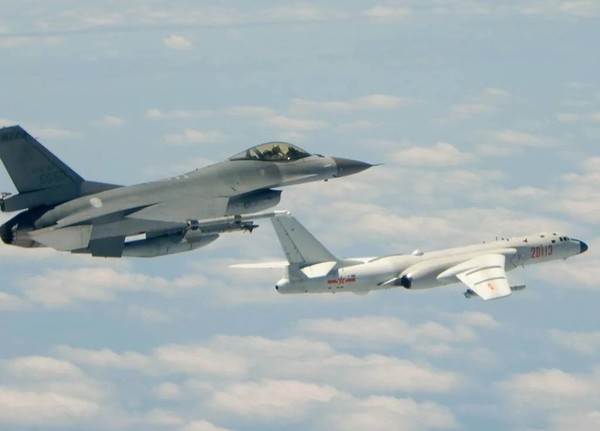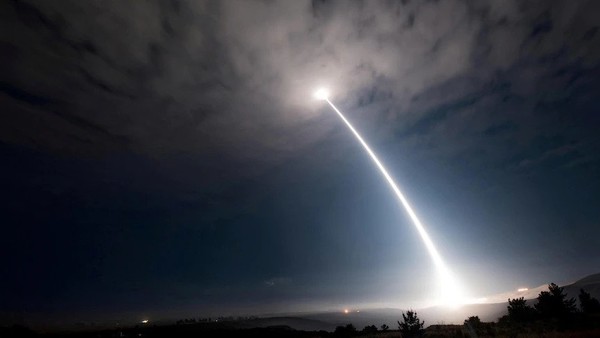As U.S. House Speaker Nancy Pelosi visited Taiwan on 2 August this year, China stepped up a series of military, economic, and diplomatic restrictions on Taiwan. Though this is not page one of this long story, some experts point out that China’s move this year is unprecedented as they even mobilized fighter jets and missiles in their drills. In the meantime, tensions between China and the United States are escalating as the Biden administration has been showing more interest in Asia. Let's look into the cause of the long-standing conflict between China and Taiwan, each country’s stances, and the United States’ intervention in between those two countries with CAH.
1. The History of Taiwan’s Government
In 1911, Chinese revolutionaries overthrew the Qing Dynasty that had been ruling China’s mainland and established the Republic of China (ROC). In 1948, a civil war broke out on the mainland between the Kuomintang, the nationalist government led by Chiang Kai-shek, and Mao Zedong’s Communist Party. In the end, the communist party won, leaving Chiang Kai-shek no choice but to flee to Taiwan with his supporters, where he ruled the island for decades. Since the ROC government moved to Taiwan, the ROC and the present Chinese government, have both expressed their ambitions to reunify and have claimed that the mainland territory belongs to them. Currently, Taiwan's possibility of taking over Beijing, the capital of the PRC, is lower than that of China taking control of Taipei, the capital of Taiwan, and Taiwan insists that it was never part of the modern Beijing government, founded in 1949 by Mao Zedong.
2. The Taiwan-China Conflict: The Two Countries’ Objectives
a. Taiwan: Independence of the Republic of China
The Taiwanese government’s unofficial legal status is the reason the ROC demands independence from the Beijing government. Back in the day, Chiang's ROC government succeeded in earning a seat in the United Nations Security Council with the ambition to retrieve the mainland that the Communist Party took from him. However, an international opinion that Taiwan is no longer appropriate to represent the entire continent alone gradually became dominant, and in 1971, the UN changed its diplomatic recognition to the People's Republic of China (RPC), the government founded by the Communist Party, and the ROC lost its official diplomatic status. Furthermore, the number of countries that recognize Taiwan as an independent country decreased to 15 as the United States officially cut Taiwan loose. Since then, Taiwan has been demanding its independence, citing its independent constitution, a democratically elected government, and an independent military force of about 300,000.[1]
b. China: “One-China” Policy
The People's Republic of China has consistently advocated the “One-China” policy, meaning there is one Chinese government under the Sun that represents China. The PRC thus insists that Taiwan is one of China’s provinces and must be unified one day. As if to make their claim come true, the PRC has put military and economic pressure on Taiwan since the former government (ROC) took control of Taiwan. The PRC’s has conducted three major military movements in various forms, ranging from armed conflict to missile threats over the years, all of which are referred to as the Taiwan Strait. Moreover, China passed the Anti-Secession Law in 2005 that allows forceful deterrence of Taiwan's independence when peaceful means seem incompetent. In terms of economics and policy-related deterrent, China has strengthened its anti-Taiwan policy since 2018 by prohibiting foreign firms from conducting sales on China’s mainland unless they represent Taiwan as part of the PRC. In addition, after Nancy Pelosi's appointment with the Taiwanese president, China imposed additional trade regulations on Taiwan, limiting natural sand export to and the import of fish and fruits from Taiwan.[2]
3. The Tension Between China and The United States
a. The United States’ Position Between China and Taiwan
The United States has unofficially supported Taiwan for a long time. In 1979, during president Jimmy Carter’s administration they officially established diplomatic ties with the PRC and cut Taiwan off. Meanwhile, in that same year, the United States enacted the Taiwan Relations Act (TRA) to support Taiwanese self-defense. Upon this legal basis, the U.S. has been continuously exporting weapons to Taiwan. Therefore, although the U.S. has no official diplomatic ties with Taiwan, it is difficult to argue that the U.S. has completely cut Taiwan loose, and the Council on Foreign Relations described it as a “robust unofficial relationship.”[3] Recently, five members of Congress led by Senator Ed Markey visited Taipei on August 15. A spokesperson for Markey stated that this visit as “reaffirm the United States’ support for Taiwan […] will encourage stability and peace across the Taiwan Strai”s," which technically reaffirmed the United States’ relationship with Taiwan.[4]
b. The United States and China’s Recent Moves
China's pressure on Taiwan this year began before the arrival of Nancy Pelosi, the highest-ranking U.S. government official to visit Taiwan in 25 years, but was further reinforced afterward. As extraordinary moves such as fighter jets, warships, and ballistic missiles came into play, some experts suggest that China is preparing to forcefully unify Taiwan,[5] while others say that the fourth Taiwan Straight Crisis is close.[6] As five U.S. delegates set foot on Taiwan, China's Defense Ministry asserted about the visit on Monday, 8 August, that "it violates China's sovereignty and territorial integrity.” The Chinese military then immediately responded with military drills, including military exercises in the waters and airspace such as combat alert patrols.[7] Army Senior Colonel Shi Yi, spokesman for the Chinese military’s Eastern Theater Command, said on Weibo that the operation is “a solemn response to political plays by the US and Taiwan that are undermining the peace and stability of the Taiwan Strait,” and showed a firm warning to the U.S. by adding that they “will take all necessary measures and resolutely defend national sovereignty and the peace and stability of the Taiwan Strait."[8] Meanwhile, the United States’ Air Force Global Strike Command test launched Minuteman III intercontinental ballistic missile on 2 August. The test-fire shows "the readiness of U.S. nuclear forces and offers confidence in the degree and effectiveness of the nation's nuclear degree,"[9] the U.S. Military statement said. They also emphasized that there is no other purpose, citing that the same operation has already been executed 300 times, but it shows that the tension between China and the U.S.’ of military conflict is perhaps more tense than ever.


The history of Taiwan and China began a few centuries ago and continues to this day. Although their language and culture might have been identical at the beginning, they each have developed as separate countries of their own. No hasty decisions or moves from either would be preferable for all stakeholders. As the tension between China and the U.S. seem to linger with the influence of the Ukraine-Russia war, people should give further attention to the prospects of this dispute.
[1] Reported by BBC in August 2022
[2] Reported by Anadolu Agency in August 2022
[3] Reported by Council on Foreign Relations in August 2022
[4] Reported by CNN Politics in August 2022
[5] Reported by France24 in August 2022.
[6] Reported by Center for Strategic & International Studies in August 2022.
[7] Reported by CNN in August 2022
[8] Reported by CNN in August 2022
[9] Reported by Reuters in August 2022

